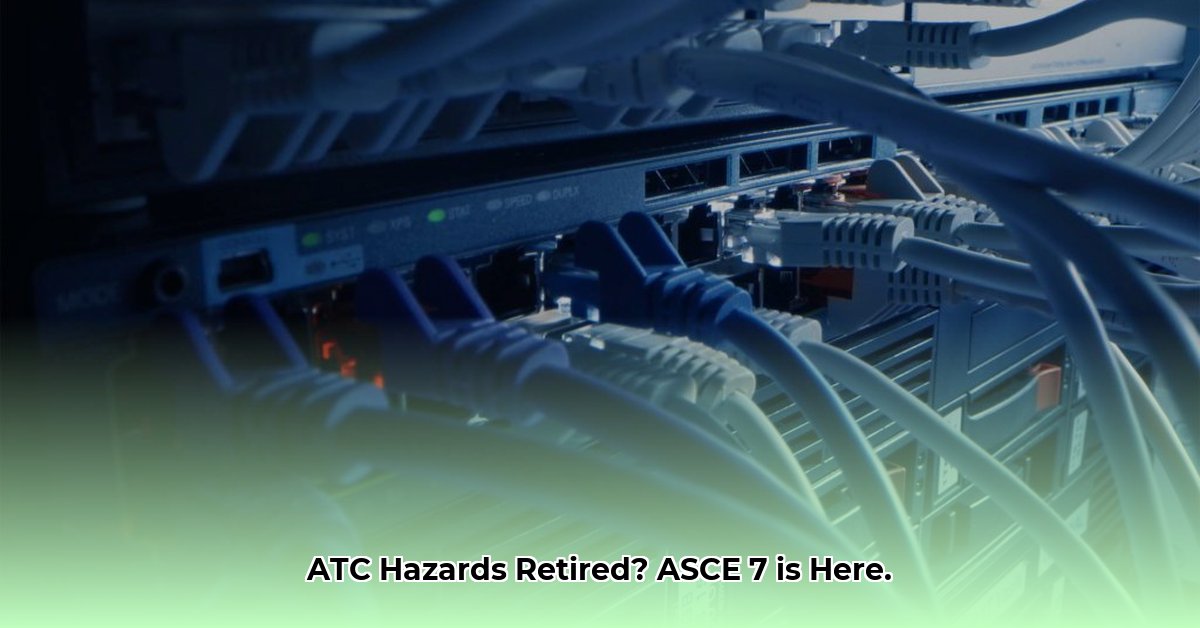News Update: Transition to the ASCE 7 Hazard Tool
The Applied Technology Council (ATC) Hazards website (hazards.atcouncil.org) was officially retired on December 31, 2024. Users seeking critical hazard data for building design are now directed to the ASCE 7 Hazard Tool (ascehazardtool.org).
Why Hazard Data Matters
Accurate hazard data, encompassing wind speeds, snow loads, and seismic activity, is fundamental to structural design. This information ensures buildings are engineered to withstand environmental forces, safeguarding life and property. The transition to the ASCE 7 Hazard Tool reflects the ongoing commitment to providing engineers with the most up-to-date and comprehensive resources.
Transitioning to the ASCE 7 Hazard Tool
The ASCE 7 Hazard Tool represents a significant upgrade from its predecessor. This new tool offers an enhanced user experience, expanded data sets, and alignment with the latest ASCE 7-22 standard. The following table summarizes the key differences:
| Feature | ATC Hazards Website (Retired) | ASCE 7 Hazard Tool |
|---|---|---|
| Data Source | Varied (primarily older ASCE standards) | ASCE 7-10, 7-16, and 7-22 |
| Hazard Types | Wind, Snow, Seismic | Wind, Snow, Seismic, Ice, Rain, Flood, Tsunami, Tornado |
| Availability | Offline | Online |
| Access | N/A | ascehazardtool.org |
Using the ASCE 7 Hazard Tool: A Step-by-Step Guide
-
Access the Tool: Visit ascehazardtool.org.
-
Specify Project Location: Enter the project address or latitude/longitude coordinates. Accurate location data is crucial for precise hazard information.
-
Select Hazard Type: Choose the specific hazard(s) relevant to your project (e.g., wind, snow, seismic). The tool allows for analyzing multiple hazards.
-
Choose ASCE 7 Edition: Select the applicable ASCE 7 standard edition (7-10, 7-16, or 7-22) based on project requirements.
-
Review and Interpret Results: The tool generates a report containing the necessary hazard data. It is essential to interpret these results in conjunction with other project-specific factors and consult with qualified professionals.
Understanding Hazard Types and Their Impact
Different geographical locations present unique hazard profiles. Coastal regions may be more susceptible to hurricane winds and flooding, while areas near fault lines experience higher seismic risk. Understanding these regional variations is paramount for effective structural design.
Wind Loads
Wind loads represent the pressure exerted by wind on a structure. The ASCE 7 Hazard Tool provides wind speed data, enabling engineers to design buildings that can withstand wind forces.
Snow Loads
Snow loads refer to the weight of accumulated snow on a roof. The tool estimates snow loads for a given location, allowing for the design of roofs capable of supporting this additional weight.
Seismic Design Categories
Seismic design categories classify the level of earthquake risk for a region. The ASCE 7 Hazard Tool helps determine the appropriate seismic design category based on location, informing structural design choices to mitigate earthquake damage. Some experts suggest that future climate change patterns may influence seismic activity, a factor that ongoing research continues to investigate.
Legal Disclaimer and Professional Advice
The information provided in this guide and by the ASCE 7 Hazard Tool is for general guidance only. It is imperative to consult with qualified structural engineers for project-specific design and application. Professional engineers can assess individual project circumstances and ensure compliance with all applicable building codes and safety standards.
Frequently Asked Questions (FAQ)
-
Why was the ATC Hazards website retired? The ASCE 7 Hazard Tool provides a more comprehensive, up-to-date resource aligned with the latest ASCE 7 standards.
-
What if I need historical hazard data? Contact the Applied Technology Council (ATC) or the American Society of Civil Engineers (ASCE) regarding access to archived data.
-
Is the ASCE 7 Hazard Tool free? (Insert information about tool access costs here – free, subscription, or tiered access).
-
How can I learn more about using the ASCE 7 Hazard Tool effectively? Consult the ASCE website (asce.org) for tutorials, documentation, and FAQs.
Keeping Up-to-Date with Building Codes and ASCE 7
Building codes and hazard assessment tools are constantly evolving. Staying informed about updates to the ASCE 7 standard and the ASCE 7 Hazard Tool is vital for engineers. Regularly checking the ASCE website and subscribing to relevant publications are recommended practices. Continuing education opportunities can further enhance professional knowledge in this dynamic field.
Optional: Related Services
(This section could mention relevant services like structural engineering consulting if applicable.)
Reference: American Society of Civil Engineers. Minimum Design Loads and Associated Criteria for Buildings and Other Structures. ASCE/SEI 7-22. Reston, VA: ASCE, 2022.
- Water Mill Electricity Generator Provides Free Home Power - December 16, 2025
- Water Wheel Electric Generator Provides Free Home Electricity - December 15, 2025
- Choosing the Right Portable Hydro Turbine for Your Needs - December 14, 2025
















